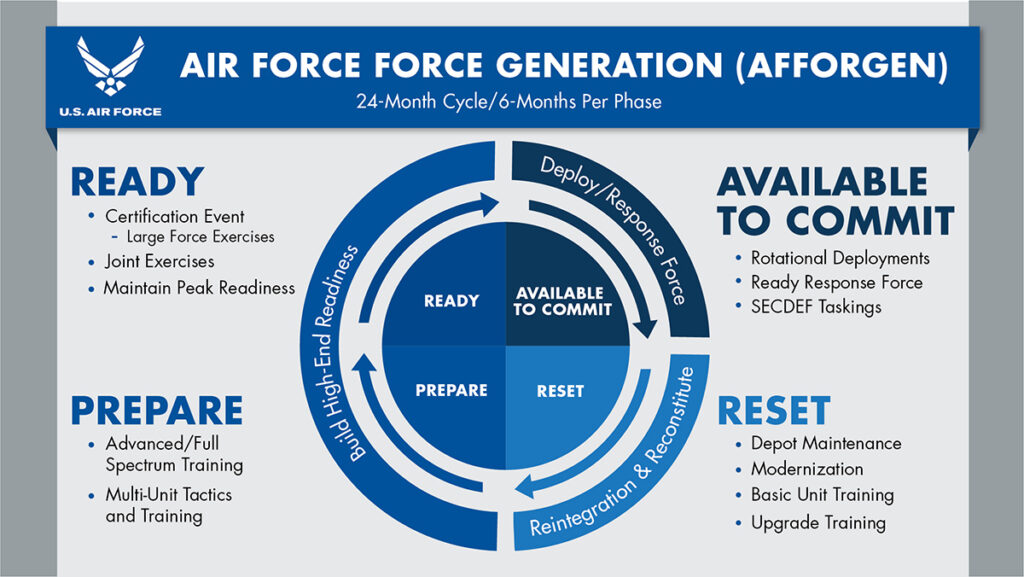Not long ago, the Army dropped its old rigid AFORGEN deployment cycle model in favor of its new more flexible REARMM (Regionally Aligned Readiness and Modernization Model) program. Now the Air Force has followed suit and has updated its AFFORGEN deployment model. This is the first major update to its deployment model in over 20 years.
New Rotational Cycle
Like the Army’s REARMM, this new Air Force deployment cycle will provide more structure and predictability for airmen and their families. Under the new model, the 24-month rotational cycle is broken down into four 6-month phases:
- Prepare
- Certify
- Available to Commit
- Reset
The tasks under each phase are as follows:
Prepare
- Advanced/ Full Spectrum Training to improve readiness
- Multi-Unit Tactics and Training to develop joint interoperability among deploying entities
Certify
- Certification event to test readiness
- Joint exercises to test interoperability
- Maintain peak readiness through taskings and training
Available To Commit
- Rotational deployments that are fully prepared to deploy
- Ready Response Force taskings as required
- SECDEF missions as dictated
- Basic unit training to sustain training
- Upgrade training as required
- Aircraft readiness recovery training to maintain skills
Infographic Courtesy of the U.S. Air Force
Force Element (FE) Concept
The new model also has seven Force Elements or FEs that determine operational capability:
- Mission Generation – Provides combat, combat support and combat service support.
- Open the Airbase – Provides capabilities for everything needed to open an airbase.
- Command and Control – Provides capabilities to establish C2 at the expeditionary level.
- Establish the Airbase – Provides additional forces needed to support missions and to man weapon systems.
- Operate the Airbase – Adds more combat support and combat service support beyond what is initially provided to open and establish an airbase.
- Robust the Airbase – Once operational, this FE provides additional resources to increase the capabilities of what are already present under the FEs Open, Establish and Operate.
- Demand Force Teams – Provides unique or highly specific combat, combat support or combat service support to increase capabilities specific to the mission of the base.
New Deployment Phases
Under the old model, airmen were taken from various units depending on the skills needed for a particular mission. Now airmen are assigned to a deployment phase A, B, C or D … replacing the old phases of P and X. Another major difference between the old and new model is that FEs are tailorable, but not divisible. In other words, when a subset of airmen from a specific deployment phase are deployed, the remaining units in that deployment phase will be unavailable for deployment during that deployment cycle. This will help keep units together for future deployments while still providing the necessary skills to support today’s deployment needs and beyond.





